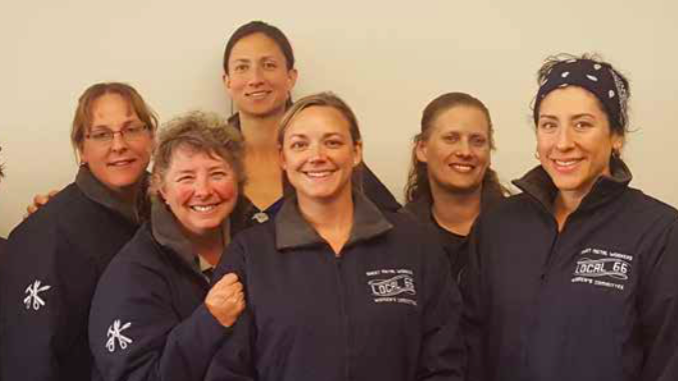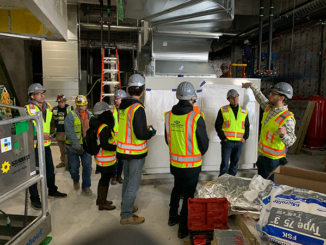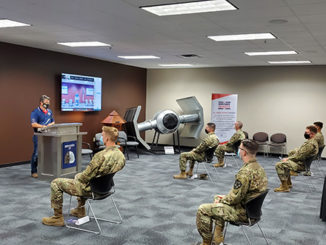By / Jessica Kirby
Changing labor force demographics and supply are catalysts for change in labor force patterns in the sheet metal industry. No longer the exclusive territory of a single gender or ethnicity, initiatives focused on recruiting women and minority groups are growing among local SMACNA chapters and at the National level, and the momentum is building.
In 2008, Angie Simon was president of Western Allied Mechanical, a mechanical contracting firm with around 225 employees, and she’d been involved in the Bay Area SMACNA chapter since 1999. She was asked to join the National board and was surprised to learn she would be the first woman to do so.
“I couldn’t believe it,” says Simon. “SMACNA is about to celebrate its 75-year anniversary and it had never had a woman on the board? Where were all the family owned businesses run by women?”
The reaction to her appointment was equally baffling for some of the people on the board, which is made up of 25 individuals from across the country.
“After the first half day of first meeting I attended we went to lunch and three different guys came up and said, ‘Wow, I didn’t know a woman could know that much about air conditioning.’ They had never experienced women in their business. A lot were floored, and most assumed I got into the industry because my dad owned the business.”
Simon, a mechanical engineer who became interested in HVAC in college and whose father does not own a related business,
witnessed many changes after four years on the SMACNA board. Her fellow board members took the message of her success home to their local chapters and the word spread.
“After four years, the membership started transitioning to know and understand women can know HVAC and be good at it,” she said. “Two other women came on the board and that really opened the door.”
After her board term Simon was approached to see if she would work her way through the various committees and executive chairs, and when she finally agreed, it stirred up excitement for other women on the board and in the industry. Rumor had it, National wanted a woman who could be president. She was elected vice-president in 2016 and will move in to lead the association as president in 2019.
“There was a lot of excitement, so we decided to gather all the women of SMACNA and get them involved,” says Simon. “We started at the grassroots level.”
Simon, Julie Muller-Neff, executive vice-president of SMACNA-Western Washington, Bridgette Bienacker, director, business management and membership for SMACNA National, and about eight others made up a committee task force to establish a SMACNA Women in Construction Leadership Council.
“We decided as a group we would start, but it would take time,” says Simon. “First, at the convention, we had a speaker talking about women’s issues, and then a round table discussion sharing ideas and getting to know people.
“We were amazed at the turnout. We had a very involved, interactive group.”
The optics of Simon’s rise through the ranks were essential in moving the association forward in terms of attracting and retaining female members. As she moved through the chairs, it propelled momentum as other women could see their peer making progress and being successful at this level.
“Part of the biggest issue we have is we need people in these positions so other ladies can see it can be done,” says Simon. “It is now time to take the next steps in the leadership group. We met in Boston to discuss the strategic plan and decide where this group wants to go and what we can do.”
Of those next steps, the first – and perhaps most important – will be to roll out the group’s mandate and initiatives to local chapters and keep the momentum moving forward.
“I went to the Women Build Nations Conference last year in Chicago and there were probably 1600 tradeswomen there and they are working in the field,” says Simon. “Some have been steel workers for 30 years—I can’t imagine what that was like.”
Simon also attended the MCA Chicago Women’s Leadership Group dinner night and found a great deal of support for joint SMACNA-MCA initiatives.
And while the Women’s Leadership Council has set up a listserv for interested members to stay connected about activities, initiatives, and mentorship opportunities, it will also need men’s support if it is to reach its full potential. The whole industry must support diversity and address prohibitive issues, and once again it comes down to optics.
Simon addressed the Bay Area membership with 200 in the room. In her speech she noted that contractors tend to talk to their sons, grandsons, and nephews about the business and she issued an important challenge: “If you love this industry so much,” she said, “why not ask your daughters, granddaughters, and nieces? I challenge each of you to go home and tell at least one woman about your industry.”
Simon, Muller-Neff, Mechelle McNew, SMART Local Union 464, and Leah Rambo, SMART Local 28 Training Center presented a session titled Diversify the Workforce: Recruiting Women and Minority Workers at the 2018 Partners in Progress Conference, covering research that shows embracing diversity in construction helps contractors experience higher performance and increased profitability.
Other Women’s Council efforts include using social media to spread the word and bring women together. “We are breaking barriers in certain parts of the country,” says Simon. “The West Coast tends to be more progressive and collaborative, while other parts are way less likely to try women in key roles.
“We need to find women in those roles and support them so they have the strength to stay and show the guys they can do it, and inspire women.”
Ours is a great industry, but it is not an easy industry,” says Simon, “but the next decade is going to change a lot faster than that last. Millenials are very collaborative. Our sons no longer see color or sexual orientation.
“We can’t get frustrated, because things will change. We have to instead focus on the groundswell.”
SMACNA’s leadership group is well-timed as chapters across the country have already set up women’s groups focused on recruitment and retention and addressing the issues women face in trades.
SMACNA-Western Washington has a women’s group focused on helping to foster an environment that welcomes women into the industry and assist with growth and leadership opportunities. Some of its initiatives include yearly educational programs at the convention, and, in future, local quarterly meetings. It seeks to conquer resistance wth a positive attitude and policy of inclusiveness.
“Diversity in the workplace fosters more diversity,” says Muller-Neff, who co-chairs the Women’s Leadership Council with Simon. “Get a current woman leader in the company to help recruit. Show there are opportunities for women; show what an amazing industry it is.”
Local 66 also has a women’s committee and through the JATC, labor and management established a mentorship program to support women in the trade. The JATC came on board because it needed a good step for retaining women and mentorship proved a key element in keeping women in the trade.
“When we decided to have the mentoring program for the women’s committee, we reached out to journey-level women,” says Committee Chair, and Sheet Metal Foreman, Vanessa Carman. There was a two-day training that involved the mentors, labor, and management, and established the program’s structure and roll out.
The group’s mission is to recruit and retain women to the sheet metal industry. Journey-level women are paired with one or two mentees each at a kick-off lunch and “speed dating style” meet and greet.
“There are monthly check-ins and meetings, and most importantly, the mentees have an open line to reach out to a mentor if they have a problem,” says Carman.
The women’s committee’s on-going initiatives include attending career fairs, volunteerism in union activities, and active outreach. Moving forward, Carman forsees pregnancy and maternity leave as an issue the union will have to deal with. “It’s out there,” she says. “Iron workers have maternity leave. There will certainly be discussion among all the trades how we will handle this.”
Simon has some advice for young women seeking a career in the sheet metal industry and for contractors looking to recruit a more diverse workforce.
“To a young woman, it’s an exciting and dynamic industry. Every day it is something different—you are never bored. Women project managers handle stress better, multitask, and take care of foreman because they care about them. There is a lot of potential and plenty of room for you and if you need help, I am here to help for mentorship.
“We can help contractors with support documents to show how a diverse workforce will be more productive and make you more money,” she says. “If you have a woman, have that person help when recruiting. Don’t be afraid to give her opportunities.
“It changes the dynamic and will help make you a better contractor.”




